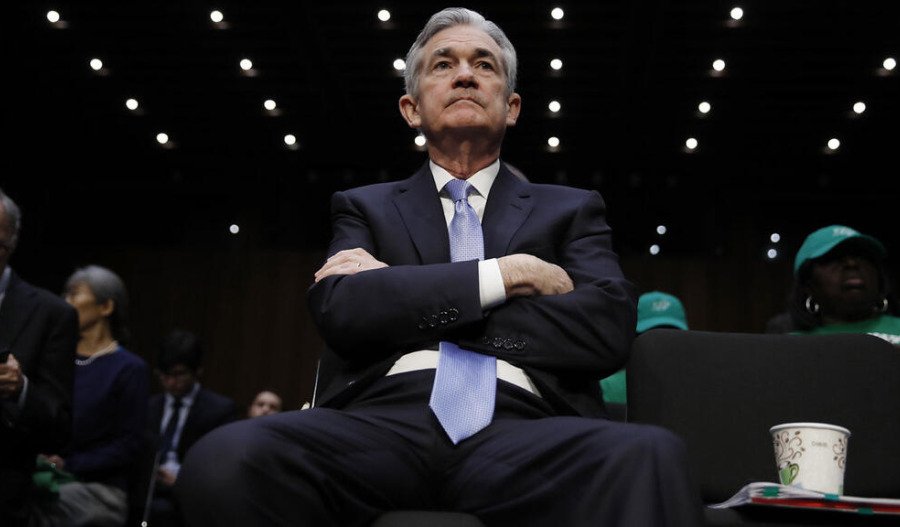The United States dollar index (DXY) started the week above freshly printed three-year lows as escalating Middle East tensions boosted safe-haven demand.
After falling to 97.6 last Thursday - the lowest since March 2022 - the DXY ended last week near 98.0. The broader risk-off shift was triggered by Israeli airstrikes on Iranian nuclear and military sites, stoking fears of wider regional conflict.
This marked the fifth consecutive monthly loss for the greenback, down over 11% from January peaks. While market sentiment had been dominated by a "sell America" trend amid dovish Fed expectations and trade policy concerns, Friday's escalation shifted capital back into the dollar and U.S. Treasuries.
Meanwhile, following two days of negotiations in London, President Donald Trump declared that a U.S.-China trade framework had been finalised.
According to the deal, Beijing agreed to resume rare earth elements supply, while Washington will impose a composite 55% tariff on Chinese imports, including a 10% reciprocal levy, 20% targeting fentanyl trafficking, and 25% on persistent trade barriers. China retaliated with a 10% tariff on U.S. goods.
Although inflation data last week pointed to disinflation, with consumer price index (CPI) and producer price index (PPI) both surprising to the downside, the Fed is still expected to leave rates unchanged at its 17–18 June meeting.
Euro's Four-Day Rally Ends as Conflict Jolts Sentiment
The Euro fell against the U.S. dollar, snapping a four-day winning streak as geopolitical concerns dominated markets.
Israel’s attack on Iranian targets and Iran’s retaliatory drone strikes prompted a wave of safe-haven buying. Tehran also cancelled the sixth round of nuclear talks, worsening market mood.
Data-wise, Eurozone industrial production fell sharply, and French and Spanish inflation rates remained below the ECB’s 2% target. German CPI held steady at 2.1%.
Meanwhile, U.S. consumer sentiment rose sharply to 60.5, supporting the dollar. Inflation expectations remain above the Fed’s 2% target, even as dovish bets build.
Aussie Slips Amid Regional Fears
The Australian dollar weakened last week, dropping below 0.6500 as Middle East tensions drove safe-haven flows into the greenback.
The lack of new domestic catalysts leaves the Aussie vulnerable to external shocks. Upcoming Chinese data on industrial production and retail sales will be closely watched this week due to Australia’s deep trade links with China, while local employment data will also be in focus.
U.S. inflation data reinforced expectations of a possible Fed rate cut in 2025, but the immediate direction remains subject to geopolitical and economic data risks.
Pound Hits 39-Month High but Retreats on Risk Aversion
Sterling climbed to a fresh multi-year high near 1.3635 during the week before pulling back amid geopolitical turbulence.
The Cable's bullish trend was initially fuelled by weak U.S. inflation data and optimism around U.S.-China trade progress. However, Israel’s strikes on Iran revived dollar demand and reversed the pair’s momentum.
Looking ahead, traders await key interest rate decisions from the Fed and the Bank of England. Both central banks are expected to hold rates steady at 4.25%-4.5%.
The pound could remain volatile next week, with UK CPI and retail sales data also on the docket.
Yen Under Pressure Despite Safe-Haven Status
The yen weakened against the U.S. dollar, with USD/JPY trading above 144.00 as the dollar drew support from risk-off sentiment.
While Japan’s traditional safe-haven role typically boosts the yen, expectations of a dovish Bank of Japan (BoJ) policy have limited gains.
Governor Kazuo Ueda previously hinted at potential rate hikes, but fragile economic data - including slowing industrial production - suggests the BoJ will hold rates at 0.5% at Tuesday’s meeting.
U.S.-Japan trade tensions also weigh on sentiment, particularly tariffs on auto and steel exports.
Key Economic Events for the Week Ahead
On Monday, China will release a series of key economic indicators, including the house price index, fixed asset investment, industrial production, retail sales, and the unemployment rate.
In Europe, attention will turn to the labour cost index and wage growth figures. Meanwhile, Canada is set to publish housing starts data, and the United States will release the NY Empire State manufacturing index.
Tuesday will see the Bank of Japan announce its interest rate decision, with expectations pointing to no change from the current 0.5% level.
In Europe, the ZEW economic sentiment index will offer insights into investor confidence, while the United States will deliver a raft of data, including import and export prices, retail sales, industrial production, business inventories, and the NAHB housing market index.
Wednesday brings the Bank of Canada's summary of deliberations, while Japan will release balance of trade and machinery orders figures. In the UK, the spotlight will be on inflation data, which will be mirrored by similar inflation figures from the Eurozone. The U.S. will publish building permits and housing starts data.
On Thursday, the U.S. Federal Reserve will announce its latest interest rate decision, with markets widely expecting rates to be held steady in the 4.25% to 4.50% range. The decision will be accompanied by updated FOMC economic projections.
Elsewhere, New Zealand will publish gross domestic product (GDP) data, Australia will release its employment change and unemployment rate figures, and the UK will unveil the Bank of England’s interest rate decision.
Finally, on Friday, South Korea will release its producer price index (PPI) data, while Japan will publish inflation figures and the Bank of Japan's monetary policy meeting minutes.
China is also scheduled to release its loan prime rate and foreign direct investment data. In the UK, retail sales will be in focus, while Canada will report on PPI and retail sales. The Eurozone will round out the week with its flash consumer confidence reading.



